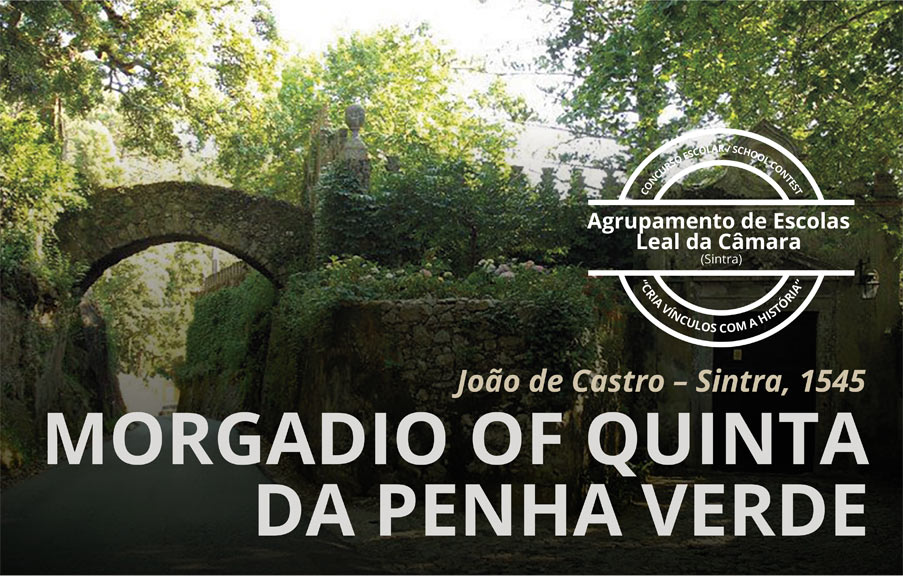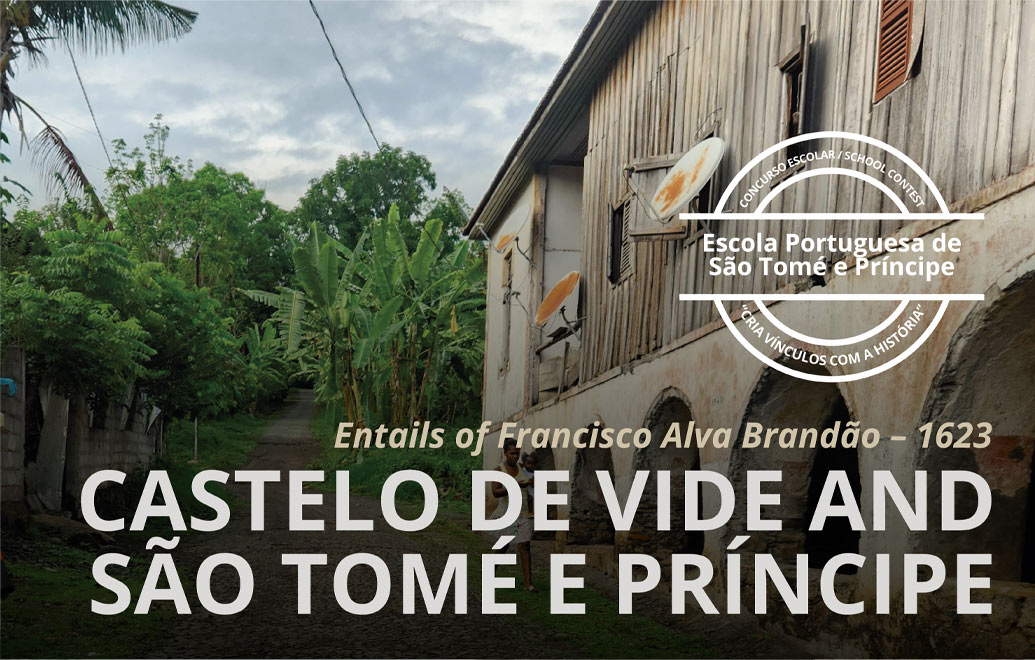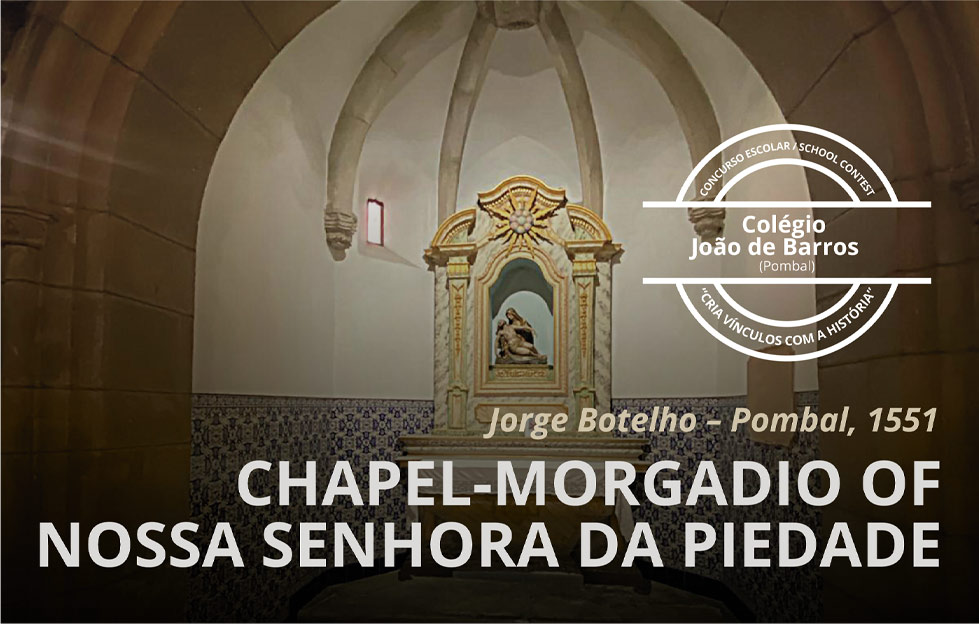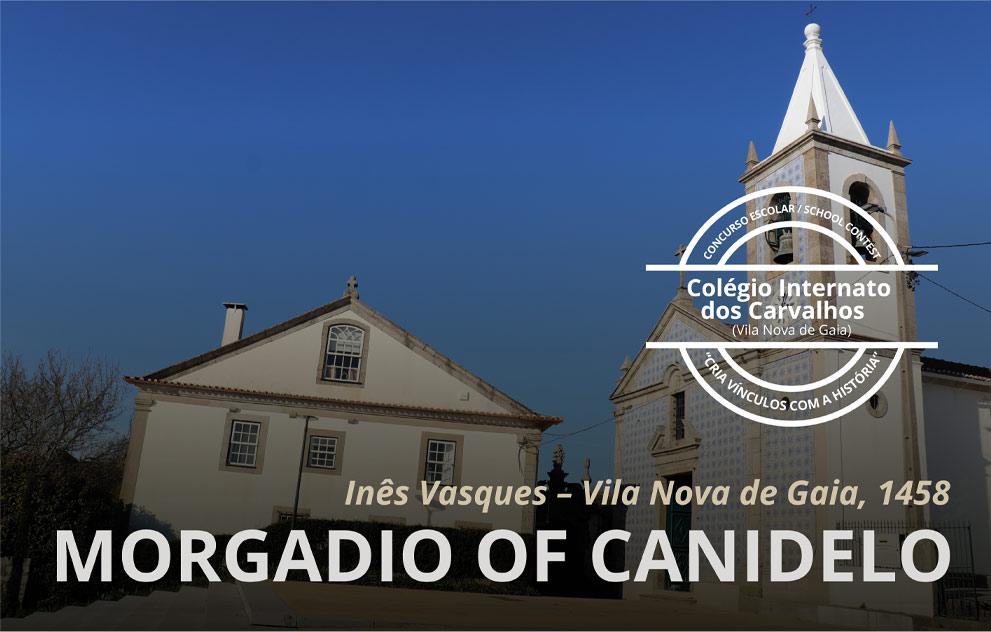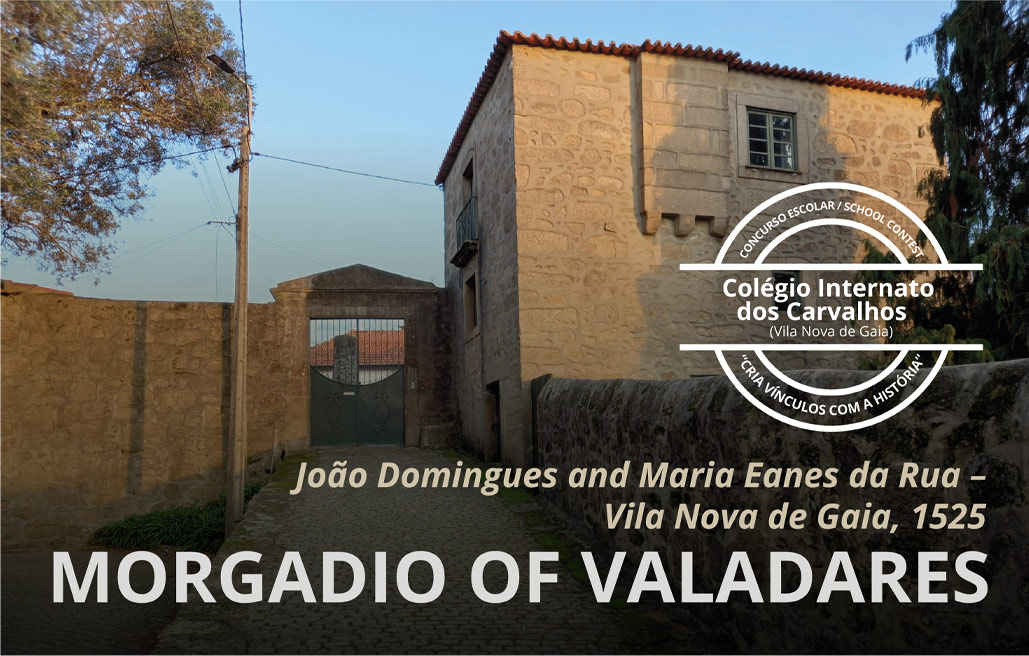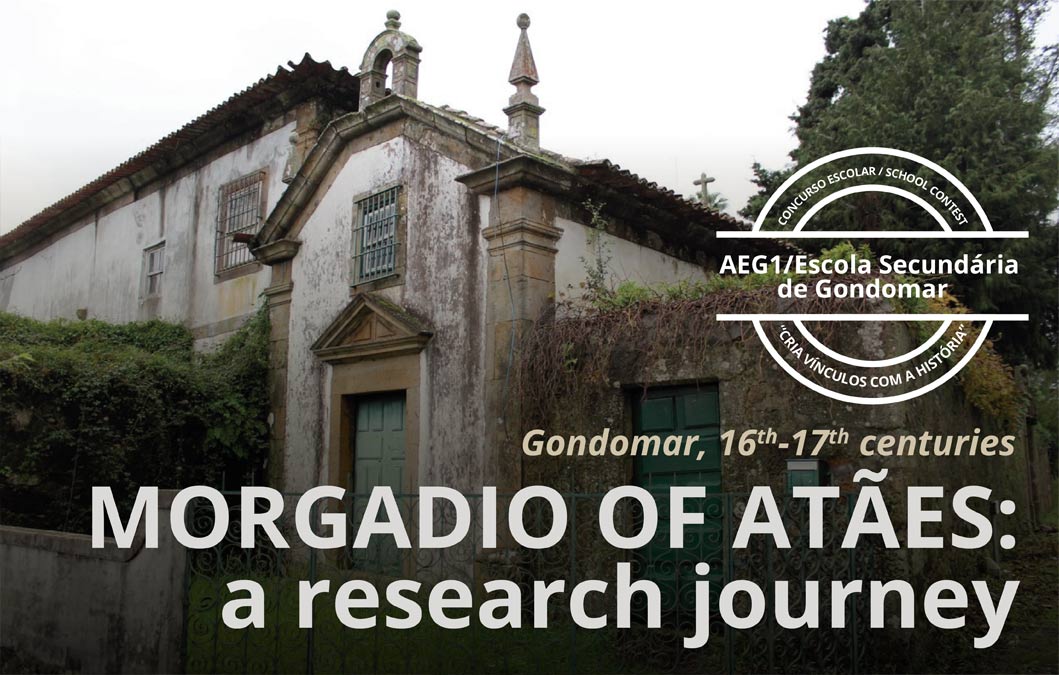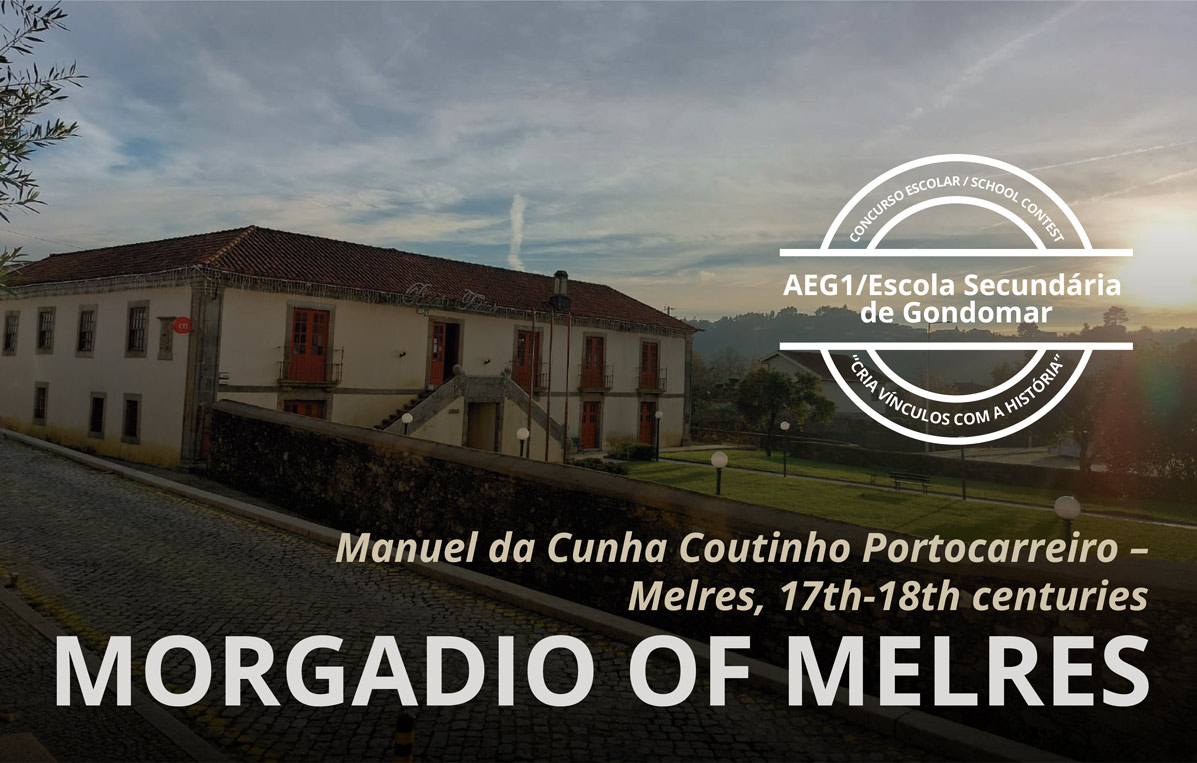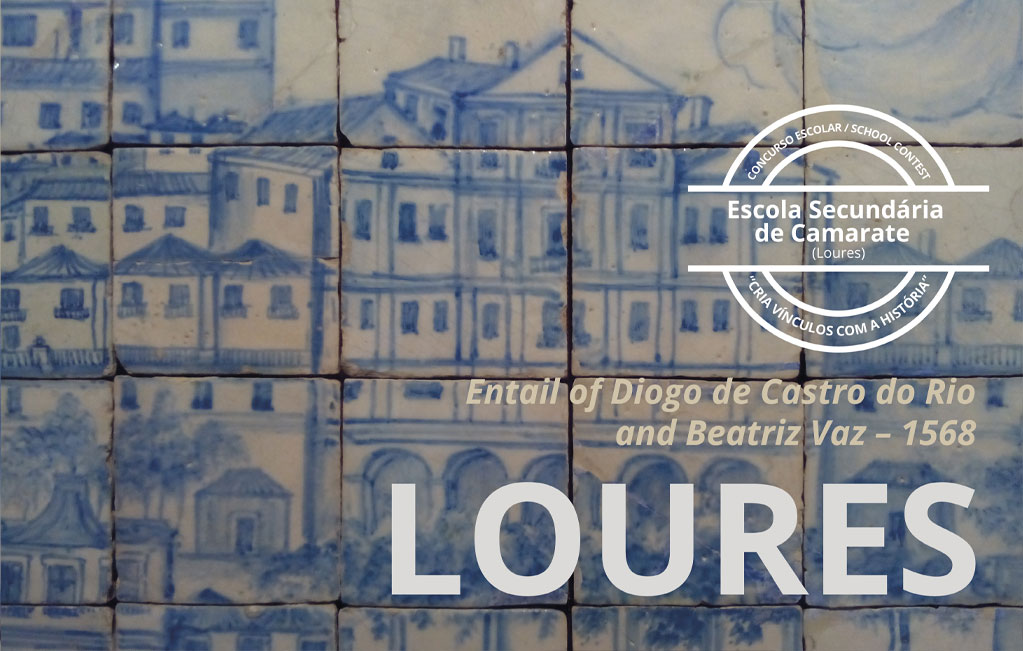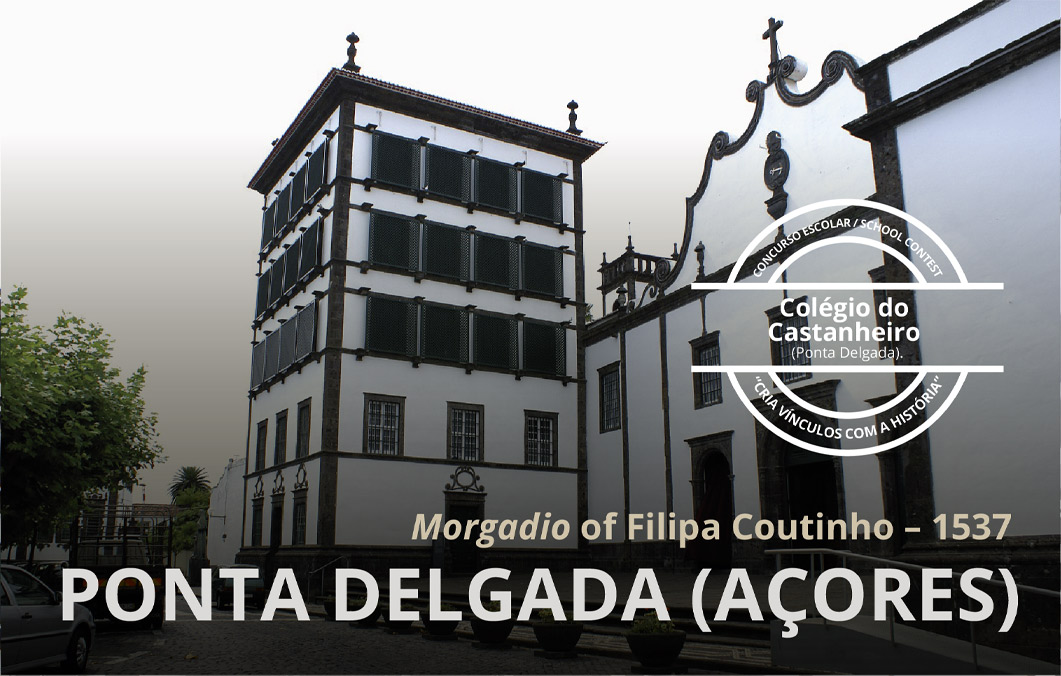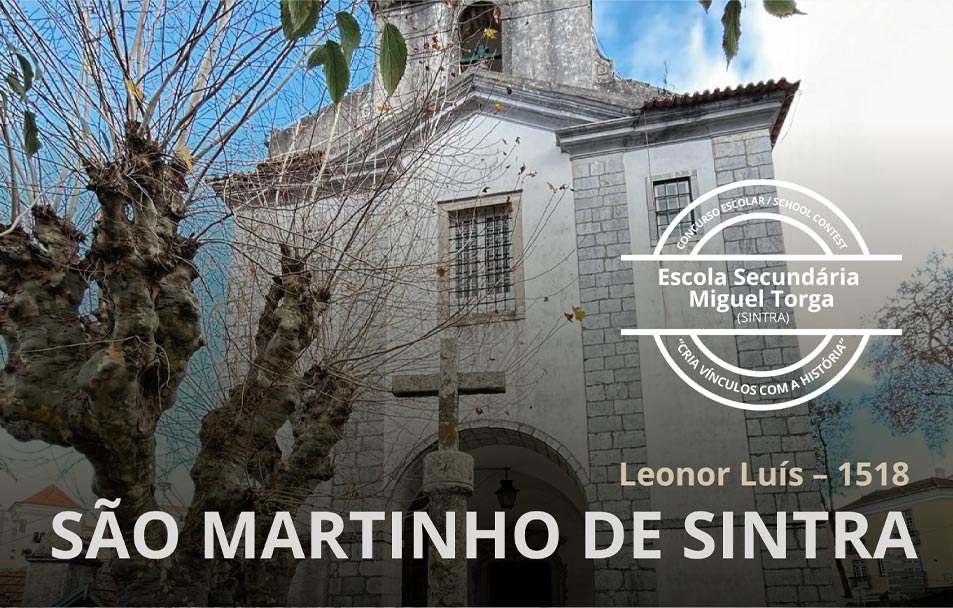Entail of the month (February, 2024)
Entail of Leonor Luís
São Martinho de Sintra, Sintra, 1518
The first reference to Leonor Luís’ will can be found in a 1710 civil deed drawn up in Sintra by Domingos Araújo (notary of the Royal Crown and Chapels’ Office). The civil judgement relates to a dispute between Alexandre Monteiro da Rosa (the plaintiff) and Domingos Gonçalves and his wife (the defendants). A few decades later, the transcription of this eighteenth-century documentation in the National Archives of Torre do Tombo allowed the will of this 16th-century Sintra woman to reach present times.
Let’s now look at the situation in which this will was drawn up.
[Fig. 1] Church of São Martinho, Sintra (churchyard and main façade, late 18th century, with traces of Gothic construction on the buttresses and walls).
On 3 May 1518, Leonor Luís was already very ill, in bed, when the notary, Pero Vaz, came to her house to approve the will previously drawn up by Rui Vicente (a cleric from the church of São Martinho), since Leonor Luís could neither read nor write (ANTT, Arquivo do Arquivo, Livros de Registo, liv. 3, fl. 295).
In her will, Leonor Luís claimed to be in good mental condition and aware of her dispositions. Leonor also requested that, after her death, her was to be carried out as it had been duly transcribed. Several witnesses were present when the cédula was drawn up: Fernão de Lemos, Álvaro Lourenço, Gaspar Gonçalves, a cirieiro (a craftsman dedicated to creating candles), João Lopes, a carpenter, Fernão Afonso and Frei Diogo, all of whom lived in the village.
Leonor stated that after her death she ought to be buried in the churchyard of São Martinho, where her parents already rested. She then began to list the properties she was leaving behind, along with a narrow, long piece of farmland (courela), located in São João dos Porqueiros (now named São João das Lampas), an olive grove she had in a town called Varatojo and a chestnut grove in a nearby mountain range (probably the Sintra mountain range).
[Fig. 2] Church of São Martinho, Sintra, main façade (galilee, tomb lid and late 18th century portal).
In order to fulfil her wishes, the testator stipulated that three masses should be forever said yearly, paid for at whatever rate was in force at the time. She went on to explain that her property could not be sold or exchanged. Only one person could own it, without dividing it. The lands were therefore inalienable and indivisible. She appointed Beatriz Lourenço, her “criada” (a servant raised at her home), as administrator of her estate. After Beatriz’s death, the administrator would always be chosen among her descendants, because of the “great service” Beatriz she done to Leonor. Beatriz Lourenço was also obliged to appoint a new administrator before her death. The new administrator would have to follow the same conditions mentioned in the will (direct line of succession, with the condition that the successor be of legal age). Leonor Luís also added that Beatriz could not appoint any of her own sister’s children (ANTT, Arquivo do Arquivo, Livros de Registo, liv. 3, fl. 295v).
If the administrator was not a direct successor, or if Beatriz died without leaving an administrator, the administration of the entail would pass to the vicar of the church of São Martinho, with an increase in the number of masses that had to be said (from three to four masses a year). Once again, the testator emphasised the fact that her family members were not to receive anything except “each one his farthing”. In other words, the family was thus prevented from inheriting Leonor Luís’ estate.
On 18 January 1710, the Court of Appeal ruled that Alexandre Monteiro da Rosa, the plaintiff in the civil case mentioned at the beginning of this text, had won the case, proving that he had been the one to denounce Leonor Luís’ chapel as vacant for the Crown. As a result, Domingos Gonçalves and his wife (the defendants) could no longer unduly enjoy the income from that entail (ANTT, Arquivo do Arquivo, Livros de Registo, liv. 3, fl. 296-296v).
[Fig. 3] Interior of the church of São Martinho, Sintra.
The church of São Martinho, located in the village of Sintra, received its statutes in 1283 and from 1307 it was already receiving burials, according to the tombstone of Margarida Fernandes, dated 1350. During this period, the church accumulated many donations, especially during the Black Plague of 1348. In the 15th and 16th centuries, it underwent a campaign of Manueline-influenced works, which gave it a new appearance. However, the 1755 earthquake caused great destruction and it ended up undergoing reconstruction work in the 1960s and 1970s (website monumentos.gov; website serradesintra.net/).
This renovated church replaced the old medieval church, where, in 1518 Leonor Luís was buried in the churchyard, as was the custom at the time. The entail she instituted lasted more than 200 years and has come down to us through a copy made in 1532, a copy that was later sought in 1719 to prove the true administrator of the entail.
This Entail of the Month was produced in the context of the Cria Vínculos com a História competition.
School: Escola Secundária Miguel Torga (Sintra).
Class: 11.º LH1.
Teacher: Helena Isabel Miguens de Carvalho Neto (intern teacher: Madalena Salvador Barreto).
Students: Adreen Vinicius Mendes da Silva, Ana Carolina Pontes Cuino, Ana Catarina Lourenço Mosca Gueifão, Ana do Mar Vicente Carvalho, Beatriz Lêdo Henriques, Beatriz Paschoal Morais Ferreira Fernandes, Diogo Rafael Garcia Barreira, Eunice Biai Sequeira Miranda, Gonçalo Miguel Pinto Vaqueiro, Inês Sofia da Fonseca Mendes, Leonor Canas Pereira Palhares, Leonor Pinto Morgado, Lúcia Figueira de Matos, Mafalda Alexandra de Figueiredo Gonçalves, Mariana de Almeida Rezendes Garcia, Melisa Metinova Mehmedova, Nicole Sofia Costa Morais, Rita de Cássia Castro Aveleira, Ruguiatu Raissa Gomes Só, Tatiana Popovici.
Coordination: Maria de Lurdes Rosa, Leonor Dias Garcia.
Sources and bibliography
ROSA, Maria de Lurdes – O morgadio em Portugal, sécs. XIV-XV. Modelos e práticas de
comportamento linhagístico. Lisboa: Editorial Estampa, 1995. ISBN 972-33-1137-2.
ANTT, Arquivo do Arquivo, Livros de Registo, liv. 3, fls. 294v-296v.
Website Monumentos – Igreja paroquial de São Martinho de Sintra / Igreja de São Martinho [online] [12/02/2024]. Available at http://www.monumentos.gov.pt/Site/APP_PagesUser/SIPA.aspx?id=7881
Website Serra de Sintra – Igreja de São Martinho em Sintra [online] [12/02/2024]. Available at https://serradesintra.net/igreja-de-s-martinho/
Other entails of the month



